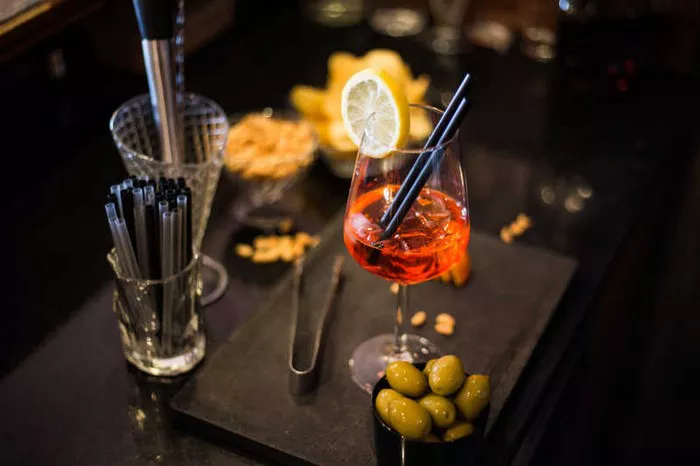The Sidecar, a classic cocktail with a delightful balance of tart and sweet flavors, has graced the menus of sophisticated bars for decades. But what is in a Sidecar cocktail? This elegant libation is deceptively simple, requiring just three key ingredients:
Cognac: The base spirit of the Sidecar, cognac provides a rich and complex flavor profile with notes of fruit, oak, and spice. The quality of the cognac significantly impacts the overall taste of the cocktail, so choosing a good-quality cognac is essential.
Orange Liqueur: Typically, Cointreau or Grand Marnier is used, adding sweetness and a vibrant orange flavor that complements the cognac’s richness.
Lemon Juice: Freshly squeezed lemon juice adds a refreshing tartness that balances the sweetness of the orange liqueur and creates a harmonious flavor profile.
The Perfect Ratio:
While variations exist, the classic Sidecar recipe calls for a 3:2:2 ratio of cognac, orange liqueur, and lemon juice, respectively. This ratio creates a perfect balance between the sweetness, tartness, and strength of the cocktail.
See Also: Experiencing Paradise: Top 10 Things to Do in Antigua and Barbuda
Crafting the Sidecar:
Combine the cognac, orange liqueur, and lemon juice in a cocktail shaker filled with ice.
Shake vigorously for about 15 seconds to chill and dilute the cocktail.
Strain into a chilled coupe glass.
Garnish with a lemon twist or an orange peel, expressing the oils over the surface of the drink for added aroma.
Variations on a Theme:
While the classic Sidecar is a timeless masterpiece, bartenders and cocktail enthusiasts often experiment with variations:
Sugar Rim: For an extra touch of sweetness and visual appeal, the rim of the coupe glass can be dipped in sugar before adding the cocktail.
Different Liqueurs: While Cointreau and Grand Marnier are the most common choices, other orange liqueurs, such as triple sec or curaçao, can be used to create subtle variations in flavor.
Aged Sidecar: Some recipes call for aging the cocktail in a barrel for several weeks, resulting in a more complex and mellow flavor profile.
The History of the Sidecar:
The exact origin of the Sidecar remains shrouded in mystery, with two main competing claims:
Parisian Origins: One story attributes the creation of the Sidecar to Harry’s New York Bar in Paris during the early 20th century. It is said to have been named after the motorcycle sidecar, as the drink was supposedly popular among American soldiers stationed in France during World War I.
London Origins: Another claim suggests the Sidecar was invented at the Buck’s Club in London around the same time.
Regardless of its origin, the Sidecar has stood the test of time and remains a beloved classic in the cocktail world. Its simplicity, elegance, and perfect balance of flavors make it a timeless choice for any occasion.
So, what is in a Sidecar cocktail? It is a harmonious blend of cognac, orange liqueur, and lemon juice, creating a sophisticated and refreshing libation that continues to captivate cocktail enthusiasts around the globe.


